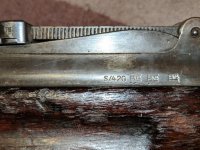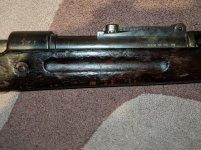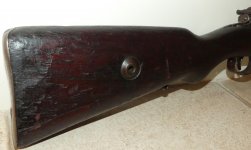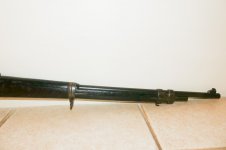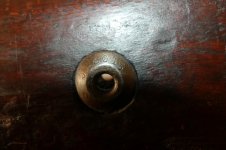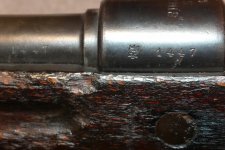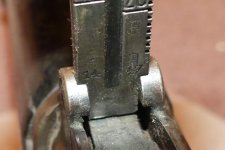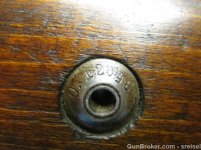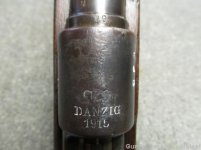Hi everyone,
I recently picked up a deactivated Simson & Co 1917 G98. The stock is quite beat up (I like it - It has a story to it). It has the correct straight bolt handle, however has the same takedown disc as the K98, as well as the same rear sight as my 1937 K98. I've been reading about the modified G98's and their use in WWII. After reading a fair bit, I think I've ended up with a G98m? Is this correct? Pictures I've seen are the same (Slot for fingers in stock/Takedown disc/Rear sight type).
I'll attach some pics of the markings on the rifle - Could people have a look and let me know if these are original markings/stamps from WW1 manufacture? (not the rear sight markings, they're obviously from much later)
Thanks!
I recently picked up a deactivated Simson & Co 1917 G98. The stock is quite beat up (I like it - It has a story to it). It has the correct straight bolt handle, however has the same takedown disc as the K98, as well as the same rear sight as my 1937 K98. I've been reading about the modified G98's and their use in WWII. After reading a fair bit, I think I've ended up with a G98m? Is this correct? Pictures I've seen are the same (Slot for fingers in stock/Takedown disc/Rear sight type).
I'll attach some pics of the markings on the rifle - Could people have a look and let me know if these are original markings/stamps from WW1 manufacture? (not the rear sight markings, they're obviously from much later)
Thanks!




